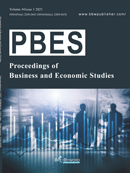Abstract
The integration of agricultural heritage and tourism industry contributes significantly to regional heritage protection, rural revitalization, and cultural inheritance. Based on the coupling coordination degree model, a quantitative research was conducted to study the integration of agricultural heritage in terms of the jasmine and tea culture system in Fuzhou with the local tourism industry. The results showed that both the development of Fuzhou’s jasmine and tourism industries have advanced significantly and are currently leading in the country. However, they are not developing at the same pace. The results also showed that the coordination degree between Fuzhou’s jasmine and tourism industries have increased in recent years, with deepened mutual effects and improved coordination. Moreover, the coupling coordination degree has been rising over the past 13 years, with the coupling coordination level transforming from “extreme disorder” to “quality coordination,” demonstrating a slow integration progress of Fuzhou’s jasmine with the tourism industry at the early stage, but a sound development momentum at the later stage.
References
Min Q, 2013, Definition of Agricultural Heritage and Its Conservation and Development. Farmers’ Daily, (004).
Koohafkan P, Cruz MJD, 2011, Conservation and Adaptative Management of Globally Important Agricultural Heritage Systems. Journal of Resources and Ecology, 2(01): 22-28.
Liu P, Gao Q, Xu W, 2008, An Analysis on the Relationship between Agricultural Heritage Conservation and Socio-Economic Development. Ancient and Modern Agriculture, 22(04): 89-98.
Ministry of Agriculture and Rural Affairs of China, 2014, Management Measures for Nationally Important Agricultural Heritage. http://www.moa.gov.cn/
Wu H, 2018, Analysis on Contemporary Innovation and Utilization of Outstanding Agricultural Heritage Systems. Agricultural History of China, 37(01): 115-121, 130.
Min Q, Sun Y, Cheng S, et al., 2007, Primary Study on the Features and Development of GIAH’s Tourism Resources. Economic Geography, 27(05): 856-859.
Wu X, 2016, Research Review on Agricultural Heritage Systems and Its Tourism Development. China Training, 16(16): 29-30.
Sun Y, Cruz MJD, Min Q, et al., 2013, Conserving Agricultural Heritage Systems Through Tourism: Exploration of Two Mountainous Communities in China. Journal of Mountain Science, 10(6).
Sun Y, Timothy DJ, Wang Y, et al., 2019, Reflections on Agricultural Heritage Systems and Tourism in China. Journal of China Tourism Research, 15(3).
Wei N, 2019, Develop Tourism While Protecting Landscape Agricultural Heritage: A Case Study of Longji Terraced Rice Fields in Longsheng, Guangxi Province. Journal of Agricultural Management Institute of Ministry of Agriculture and Rural Affairs, 10(03): 73-78.
Sun Y, Zhang C, Gao H, 2020, Conservation and Development of Hainan’s Agricultural Heritage from Ecotourism Perspective: A Case Study of Haitang Bay Paddy Field National Park. Marketing Circle, 23(04): 13-14.
Liu J, Shen S, 2020, Research on the Conservation and Tourism Development of Mulberry Plot-Fish Ponds in Huzhou, A Globally Important Agricultural Heritage. Modernizing Agriculture, 42(11): 57-60.
Su Y, Sun Y, Min Q, et al., 2019, Exploring Tourism Management Mode in Villages of China’s Agricultural Heritage Sites. Chinese Journal of Agricultural Resources and Regional Planning, 40(05): 195-201.
Zhang C, Min Q, Zhang H, et al., 2107, Analysis on the Rural Households Livelihoods Aiming at the Conservation of Agricultural Heritage Systems. China Population: Resources and Environment, 27(01): 169-176.
Yu S, 2015, Exploring Ways to Develop Cultural Tourism with Jasmine Tea in Fuzhou. Journal of Yangtze University (Natural Science Edition), 12(09): 32-35.
Lin L, Zeng F, 2016, Research on the Strategy to Develop Leisure Agriculture in Fuzhou Jasmine Agricultural Heritage Site. Rural Economic and Science-Technology, 27(23): 110-112.
Guo L, 2016, Protecting Fuzhou Jasmine and Tea Culture System, Co-building a Better Fujian Province. Chinese & Foreign Entrepreneurs, 33(25): 50-52.
Hou Y, 2019, SWOT Analysis on the Development of Jasmine Tea Tourism in Fuzhou. Agricultural Archaeology, 39(02): 94-97.
Fuzhou Yearbook Compilation Committee, 2018, Fuzhou Yearbook, The Straits Publishing & Distributing Group, Fujian.
Shu X, Gao Y, Yang C, 2015, Coupling Relationship and Coordinative Development Between Tourism Industry and Eco-civilization City. China Population: Resources and Environment, 25(03): 82-90.
Sun J, Li S, Qin W, et al., 2019, Coupling Analysis and Optimization of Cultural Resources Endowment and Tourism Industry in Shandong. Economic Geography, 39(08): 207-215.
The People’s Government of Fuzhou, 2014, Regulations on Jasmine Tea Protection in Fuzhou. http://www.fuzhou.gov.cn/
Chen W, Xia J, 2007, An Optimal Weights Combination Method Considering Both Subjective and Objective Weight Information. Mathematics in Practice and Theory, 37(01): 17-22.
Wang S, Li M, 2015, Agricultural Heritage Research in China, China Agriculture Press, Beijing, 19-25.
International Exchange Service Center, Ministry of Agriculture and Rural Affairs of China, 2020, Rural Revitalization and Agricultural Heritage: Report on China Nationally Important Agricultural Heritage Conservation and Development (2019), Beijing, 49-63.
Cong X, 2019, Expression and Mathematical Property of Coupling Model, and Its Misuse in Geographical Science. Economic Geography, 39(04): 18-25.
Wang S, Kong W, Ren L, et al., 2021, Research on Misuses and Modification of Coupling Coordination Degree Model in China. Journal of Natural Resources, 36(03): 793-810.
